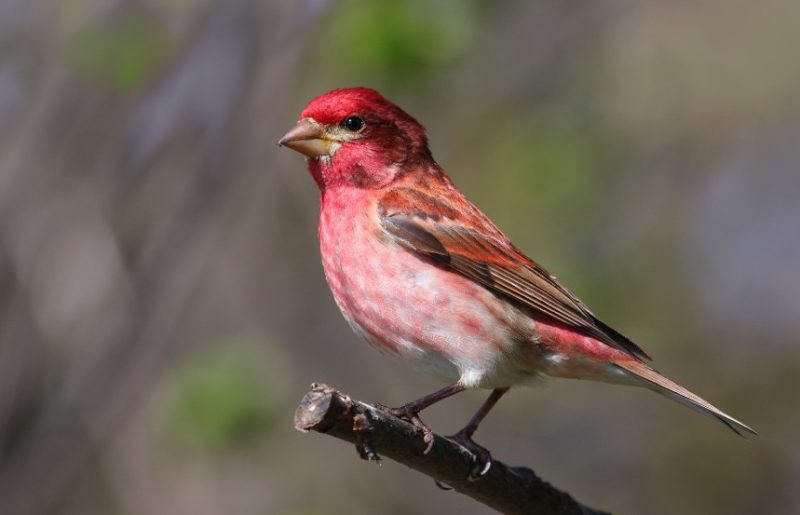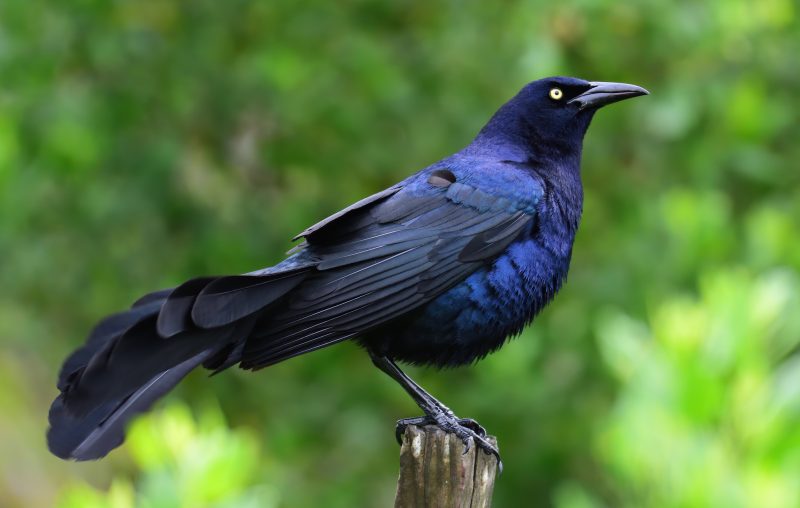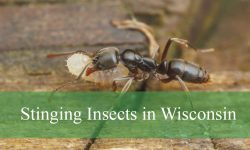Purple Birds in Mississippi add vibrant splashes of color to the state’s rich natural landscapes. From shimmering wetlands to open fields and quiet backyards, these birds attract birdwatchers with their beautiful shades and fascinating behaviors. Exploring these purple-feathered species brings a fresh sense of wonder to any time spent outdoors.
Across Mississippi, Purple Birds can be seen during various seasons, each species displaying unique tones of purple, violet, and iridescent blue. These birds brighten their surroundings while playing important roles in the local ecosystem. Observing their flights, feeding habits, and interactions offers a close connection to nature’s lively rhythms.
This guide highlights 5 stunning Purple Birds in Mississippi, featuring clear pictures and helpful identification tips. You’ll discover how to spot each bird by its colors, calls, and preferred habitats, making every birdwatching trip more engaging and rewarding. Let’s explore the beautiful world of Mississippi’s purple-winged wonders.
Common Purple Birds Found in Mississippi
Purple Martin (Progne subis)

The Purple Martin is the largest member of the swallow family in North America and a truly striking bird with its iridescent dark bluish-purple plumage that shimmers in the sunlight. Adult males are uniformly glossy purple-black from head to tail, while females and juveniles display a lighter grayish-white belly and a purple-tinged back and head. With a wingspan of approximately 15 inches and a body length of about 8 inches, Purple Martins have long, pointed wings and slightly forked tails, giving them a graceful, aerodynamic appearance during flight.
This species is well known for its bubbly, musical song made up of gurgling notes and chirps that often cascade in a series. Their vocalizations are most prominent during the early morning and evening hours, especially during the breeding season. Purple Martins are highly social birds that often form large colonies in man-made housing, such as multi-compartment birdhouses and gourd clusters specifically installed by bird enthusiasts to attract them. They are fast and agile fliers, often seen soaring high in the sky as they catch insects mid-air.
Purple Martins feed primarily on flying insects, making them beneficial birds for pest control. Their diet includes beetles, flies, dragonflies, wasps, and moths. They consume their prey while flying, using swift aerial maneuvers to capture their meals. Unlike many other swallows, they rarely perch on the ground or forage among vegetation, preferring to stay airborne when hunting.
In Mississippi, Purple Martins are a familiar sight in open areas near water bodies, grassy fields, suburban neighborhoods, and city parks where artificial nest boxes are present. They arrive in the state in late winter to early spring, typically around February to March, as part of their annual migration from South America. Mississippi lies in the heart of their breeding range, and the state’s warm climate and supportive human interaction have helped maintain stable local populations.
Purple Gallinule (Porphyrio martinica)

The Purple Gallinule is one of the most vividly colored wetland birds in North America, instantly recognizable by its iridescent purple-blue body, bright red bill tipped with yellow, and striking pale blue forehead shield. It also has bright yellow legs and oversized feet, which allow it to walk gracefully across floating vegetation. Measuring about 13 inches in length with a wingspan of around 22 inches, the Purple Gallinule looks like a bird from a tropical rainforest rather than a southeastern U.S. swamp.
Its vocalizations are a mix of cackles, clucks, and short bursts of loud, nasal “kek-kek-kek” sounds. These calls are usually heard in dense marsh vegetation, where the bird can remain hidden despite its bright coloring. Purple Gallinules are curious and often unafraid of humans. They move with deliberate steps, climbing over reeds and lily pads with great agility thanks to their long toes, which spread their weight across a wider surface area.
Their diet is quite varied and includes seeds, leaves, fruits, snails, and aquatic insects. They are also known to forage for small fish, frogs, and even bird eggs on occasion. The species is omnivorous and opportunistic, adapting its feeding strategy based on what’s available in its marsh habitat. Purple Gallinules can be seen walking atop vegetation to pick at food or dipping their head underwater while perched on stems.
In Mississippi, Purple Gallinules are typically found in freshwater wetlands, marshes, bayous, and the edges of lakes with abundant floating plants like water lilies and duckweed. They are most commonly observed in the southern and coastal regions of the state during spring and summer, especially in protected wildlife refuges and conservation areas such as the Pascagoula River Wildlife Management Area. Their vibrant presence is often a highlight for birdwatchers exploring Mississippi’s wetland ecosystems.
Purple Finch (Haemorhous purpureus)

The Purple Finch is a medium-sized songbird with a chunky build and a short, conical bill, ideally suited for cracking seeds. Males are adorned with a raspberry-red wash that covers their head, chest, and back, while their wings and tail are brown with subtle streaking. Females, on the other hand, lack the red coloration and are brown and white with crisp facial markings and heavily streaked underparts. These birds typically measure about 6 inches in length with a wingspan of 10 inches.
Purple Finches are known for their rich, warbling song that includes a series of musical, slurred notes and complex phrases. Males often sing from high perches during the breeding season to attract mates. Their vocal performance is one of the most melodic among finches and is a familiar sound in areas where the species is common. Both sexes also make soft “pik” and “tick” call notes during flight or feeding.
Their diet primarily consists of seeds, especially from conifers, maples, and elms, along with berries and buds. In Mississippi, where Purple Finches are considered winter visitors, they often frequent bird feeders stocked with sunflower seeds during the colder months. They may also be seen feeding on tree buds or fruit in woodlands and forest edges. Their powerful beaks allow them to crack open even tough seeds with ease.
Purple Finches are found in Mississippi from late fall through early spring, with sightings peaking between November and March. They prefer mixed woodlands, suburban neighborhoods with mature trees, and backyard feeding stations. While they breed in northern U.S. and Canada, their migration brings them to Mississippi as part of their wintering grounds. These birds are more common in the northern and central parts of the state and can be easily attracted by seed feeders during the cooler months.
Common Grackle (Quiscalus quiscula)

The Common Grackle is a large, bold songbird with an elongated body, long tail, and striking plumage that shifts in the light. Adult males appear glossy black at a distance but reveal iridescent shades of blue, green, and purple when seen up close, particularly on the head and neck. Females are less glossy with a more subdued brownish-black appearance. They typically measure about 12.5 inches in length with a wingspan of up to 18 inches. Their piercing yellow eyes give them an intense, sometimes eerie expression.
Common Grackles are highly vocal birds, known for their loud, metallic calls and harsh, creaking sounds. Their vocalizations can include whistles, clucks, and a distinctive “readle-eek” call that sounds mechanical. These sounds are often heard in groups, as grackles are social birds that form large, noisy flocks, especially outside of the breeding season. During display flights, males fluff up their feathers, puff out their chests, and sing from perches to impress nearby females.
These grackles are omnivorous and opportunistic feeders. They eat insects, grubs, seeds, fruits, grains, and even small vertebrates such as frogs or baby birds. In urban and suburban settings, they’re commonly seen foraging on lawns, parking lots, and dumpsters. They use their strong bills to crack seeds, pry open crevices, and even steal food from other birds. Their diet varies seasonally and shifts depending on food availability.
In Mississippi, the Common Grackle is widespread and abundant throughout the year. It thrives in a wide range of habitats including agricultural fields, marshes, suburban neighborhoods, city parks, and forest edges. These adaptable birds often nest in small colonies, choosing trees or shrubs near water sources, and they roost communally in large numbers, sometimes with other blackbird species. Their adaptability to human-altered environments has made them one of the most common and recognizable blackbirds in the state.
Great-tailed Grackle (Quiscalus mexicanus)

The Great-tailed Grackle is an impressively long-bodied blackbird with an unmistakable appearance. Males are glossy black with shimmering purple and blue iridescence, especially on the head and back. They are significantly larger than the Common Grackle, reaching up to 18 inches in length with a wingspan around 22 inches. Their most distinguishing feature is their extremely long, V-shaped tail, which is often held in a keel-like position and makes their silhouette easily recognizable. Females are smaller and brownish with a paler throat and underparts.
Vocalizations of the Great-tailed Grackle are loud, varied, and often described as comical or chaotic. Their calls include whistles, squeals, chattering, and a distinctive upward-sliding “kleek” or “kreeeeeek.” These birds are known to mimic other sounds in their environment, adding to their noisy and lively character. Males are highly performative during the breeding season, puffing up their bodies, spreading their tails, and delivering loud calls to establish dominance and attract mates.
Great-tailed Grackles are omnivores with a diet that includes insects, grains, seeds, fruit, small fish, frogs, and human food scraps. They are frequently observed walking boldly across parking lots, probing grassy areas, or scavenging in garbage bins. They feed both on the ground and in trees, often in flocks, and are known for their adaptability to urban and agricultural settings. Their boldness and intelligence enable them to exploit a variety of food sources.
Though originally native to Central America and the southwestern U.S., Great-tailed Grackles have expanded their range dramatically and are now found in parts of Mississippi, particularly in the southern and western regions of the state. They favor open areas near water, such as marshes, fields, golf courses, and city environments with large trees or power lines for roosting. While still less common than the Common Grackle in Mississippi, sightings of this species are increasing as their range continues to expand eastward.
Best Time and Places to See Purple Birds in Mississippi
Mississippi offers bird enthusiasts a variety of opportunities to observe purple-colored birds throughout the year, though the best time to spot them largely depends on the specific species. For instance, Purple Martins return to Mississippi in late February through early March, making spring and early summer the ideal seasons to view their aerial acrobatics and nesting behaviors. In contrast, Purple Finches are winter visitors, most commonly observed between November and March, especially at backyard feeders stocked with sunflower seeds. Purple Gallinules, on the other hand, are typically found during the warm months of spring and summer, often from April through September, when wetlands are lush and active.
When it comes to location, different species have distinct habitat preferences across the state. For those hoping to see Purple Martins, look to open fields, suburban neighborhoods, or parks with artificial martin houses, such as those found near Oxford, Jackson, or even rural communities where residents maintain colony housing. To spot the elusive Purple Gallinule, birders should explore coastal marshes, freshwater wetlands, and wildlife management areas, particularly around the Pascagoula River Basin and Gulf Coast preserves. For Purple Finches, wintertime visits to woodland edges, rural gardens, and suburban backyards throughout northern and central Mississippi offer the best chances.
Beyond these three, purple-tinged species like the Common Grackle and Great-tailed Grackle can be observed year-round. These birds are often found in open urban areas, farmlands, and wetlands, with the Great-tailed Grackle more frequently spotted in the south and west of the state. Public parks, nature reserves like Noxubee National Wildlife Refuge, and city green spaces across Tupelo, Meridian, and Biloxi serve as excellent birding locations. Early morning and late afternoon are usually the most active times for birdwatching, when lighting conditions also highlight the birds’ shimmering purple and iridescent feathers at their most vivid.






